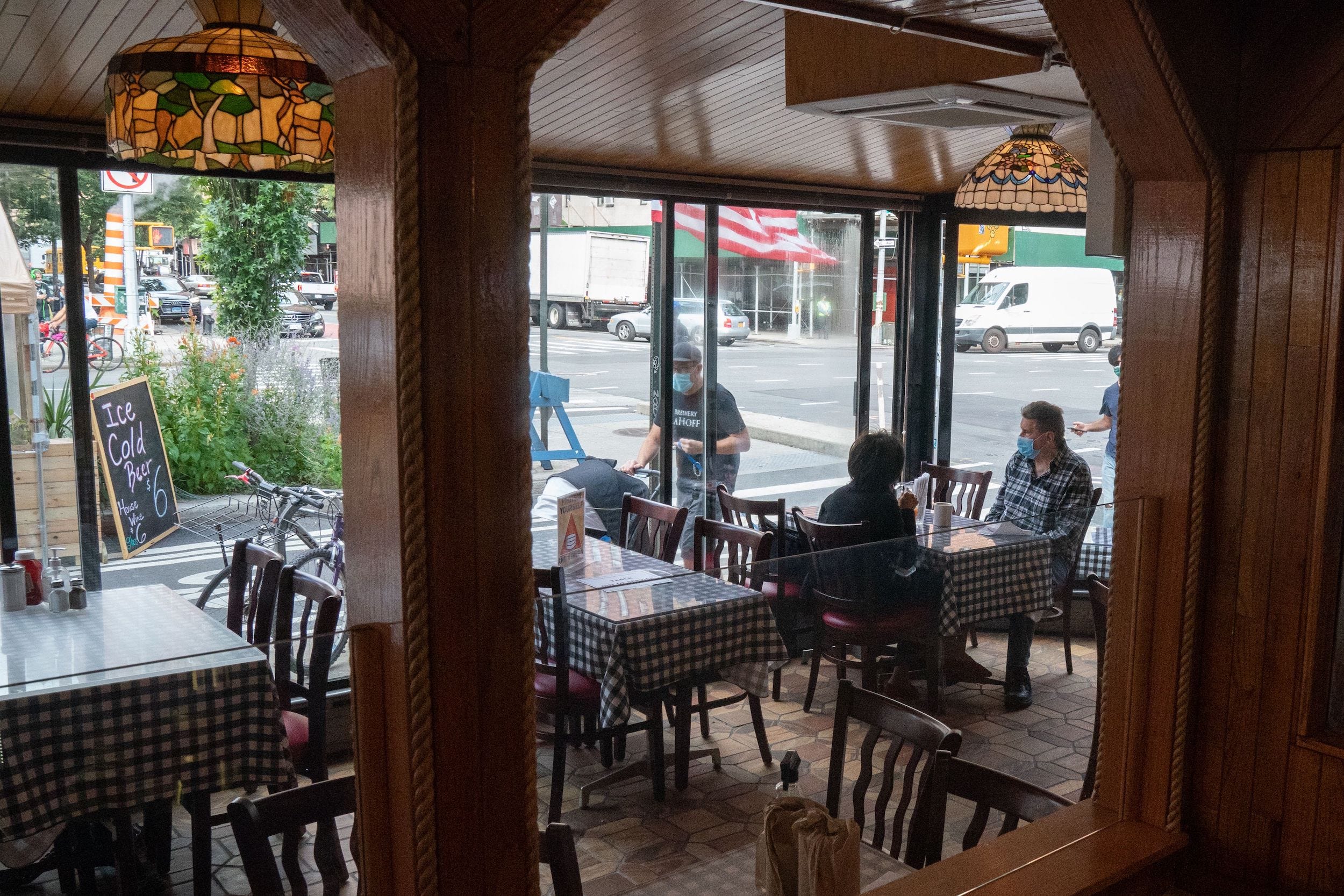
BRYAN R. SMITH/AFP via Getty Images
- A high-school student in South Korea became infected with COVID-19 within just five minutes of sitting 20 feet away from an infected person, a new study details.
- The epidemiological team used cellphone data, video footage, genome sequencing, and even recreated the situation to come to their conclusion.
- The finding demonstrates that infectious respiratory droplets can travel farther than six feet; in this case, they were propelled by the restaurant’s airflow.
- Visit Business Insider’s homepage for more stories.
When a high-school senior in Jeonju, a city in South Korea, tested positive for COVID-19 in June, public health professionals were befuddled. The city hadn’t had a case in two months, and the larger province hadn’t seen a case in one month.
The girl hadn’t traveled out of town in weeks, and had mostly only shuttled between home and school. So where, and from whom, did she get infected?
After a detailed investigation, an epidemiological team concluded the student had contracted COVID-19 when dining at a restaurant. An out-of-town business visitor, who subsequently tested positive for COVID-19, had stopped by.
The two only overlapped for five minutes, and remained 20 feet apart. They never talked or even touched the same doorknob.
The findings illustrate that the standard definition of dangerous close contact – within 6 feet for at least 15 minutes – is not necessarily safe, especially for indoor settings, and it should not be seen as protective.
The investigators used cell phone data, credit card records, and even recreated the situation themselves
To conduct their investigation, which was published November 23 in the Journal of Korean Medical Science. the team used interviews, medical history, credit-card records, video footage, and cell phone data.
They also recreated the situation in the restaurant, measuring the airflow, which was about the equivalent of a blowing fan. The restaurant didn't have windows open or the type of ventilation system that can help disperse COVID-19 particles.

The epidemiologists concluded the student was infected via respiratory droplets that were propelled along by the restaurant's airflow. Another diner along the flow's trajectory was also infected, but those with their backs to the breeze were not.
Genomic testing solidified their conclusion, as the three patients' genetic types matched.
"Incredibly, despite sitting a far distance away, the airflow came down the wall and created a valley of wind. People who were along that line were infected," Dr. Lee Ju-Hyung, an epidemiologist and one of the study authors, told the LA Times. "We concluded this was a droplet transmission, and beyond" 6.6 feet.
Indoor dining was already deemed dangerous in part due to the potential of aerosol transmission
Other cases of coronavirus transmission happening through the air at distances farther than six feet have alarmed health experts because it suggests that tiny virus particles, called aerosols, can linger in space, perhaps even after an infected person has left the area, Insider's Hilary Brueck previously reported.
But this study found that respiratory droplets traveled the 20-feet distance, which is especially worrisome since they are the central way the virus transmits.
Dr. Megan Murray, an infectious disease expert at Harvard, previously told Insider that while any dining outside of the home comes with risk, eating outside in the sun with a decent breeze at a to-go style eatery is among the safest. "Very crowded spaces without good ventilation, like bars," are the most dangerous.
Dit artikel is oorspronkelijk verschenen op z24.nl

